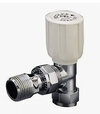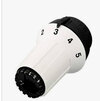The radiator in my bedroom isn’t that hot compared to others in the house. It’s hotter at the top than it is at the bottom but the top is nowhere the temp of other rads in the house at the top.
I think I’m going to replace the rad & the valves either end but the valves are the style attached in photos.
I can do most things but I don’t want to drain the boiler down.
Changing it will not be hard for me but when one valve is off how can I stop the water coming out the pipe that pops up through the floorboards.
I think I’m going to replace the rad & the valves either end but the valves are the style attached in photos.
I can do most things but I don’t want to drain the boiler down.
Changing it will not be hard for me but when one valve is off how can I stop the water coming out the pipe that pops up through the floorboards.



